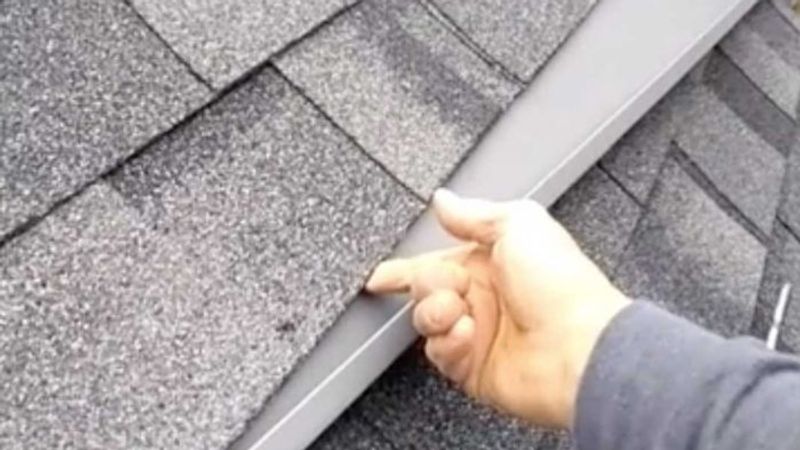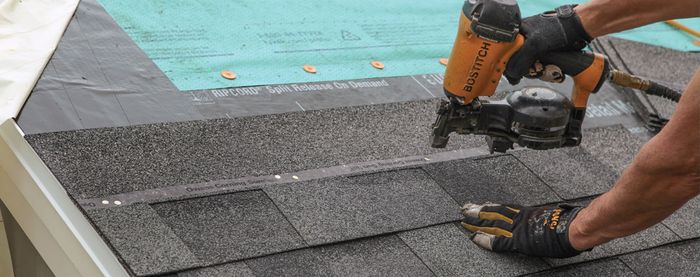Rain Diverter Protects an Uncovered Exterior Entryway
A simple formed-metal strip fastened under asphalt roof shingles diverts rainwater sideways toward a gutter to keep the area below a little drier.

Gutters collect rainwater and drain it away from a house, keeping the wall drier, reducing the splashback onto the siding, and preventing erosion of the ground below. But sometimes gutters can’t be installed (like on a portion of this house) or aren’t aesthetically desirable.
So what can you do when there are spots below a roof you want to protect from cascading water? Install rain diverters. They’re simple, formed strips of metal that slip beneath the roofing and redirect the water sideways. Often diverters are used on roofs above entryways to a house. They shift water away from the doorway so people can enter and exit a little drier.
On this house, the designer extended the eave over a large mid-wall window to shield it from the rain and add some visual interest. The result was that a gutter couldn’t be run straight across the fascia line. The water draining off the short section of roof rutted out the ground below, and mud splashed back on the siding. One solution would have been to install an interceptor area on the ground—a crushed stone area beneath the overhang or something similar. But the owner wanted the lawn to be contiguous along the house.
I recommended installing rain diverters to direct the water into the gutters to the left and right of the roof projection. There are downsides to rain diverters. First, some people find them unattractive in the way they break up the uniform field of a roof. And in cold snowy climates, diverters can be a foothold for ice dams to start. This roof area is on a narrow side yard of the house, so the owner wasn’t worried about the appearance as much as he would have if it were the front or back of the house. And ice dams aren’t likely on this house. The roof is well insulated, the house is airtight, and there hasn’t been an ice dam on the house before.
Diverters can be fabricated in either a J- or an L-profile. On this roof, we chose a fairly low-profile 1-in. J-rise design. I used regular 0.019 coil stock and doubled it over on itself so that the gray-colored side would wrap all exposed faces. The doubled thickness also helps stiffen the panels.
The top edge is tapered so that when the roof leg is slipped beneath the shingle course, the exposure is sloped to drain. The diverters are fastened down with galvanized screws under the shingle course above and dabbed with sealant.
More about gutters and rainwater control
- How To: Sizing Gutter Systems
- Fixing Common Gutter Blunders
- Is there any alternative to roof gutters?
- Install Your Own Seamless Gutters
IG – @mike_guertin


View Comments
Thank you for this inspirational piece of writing.